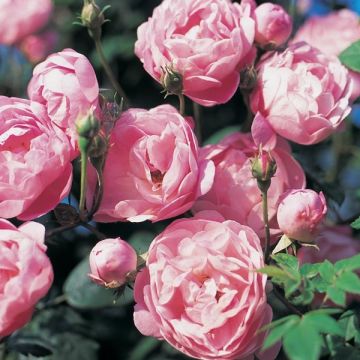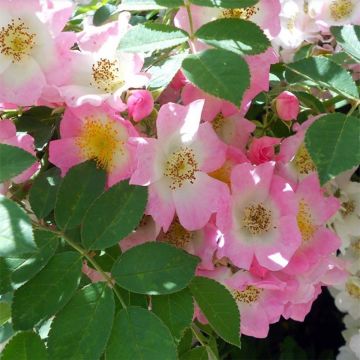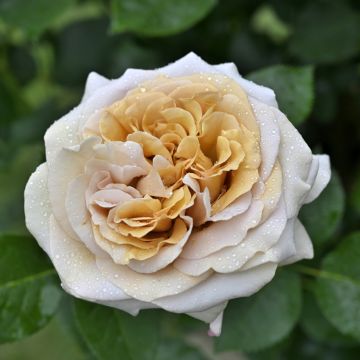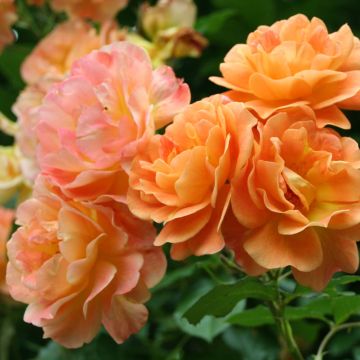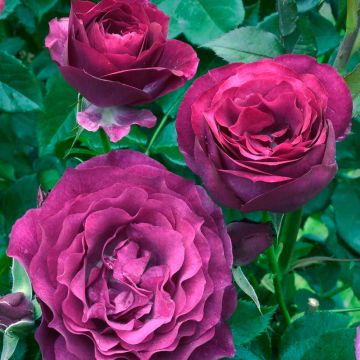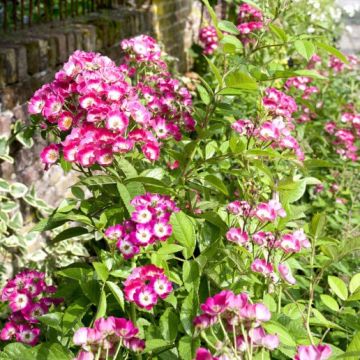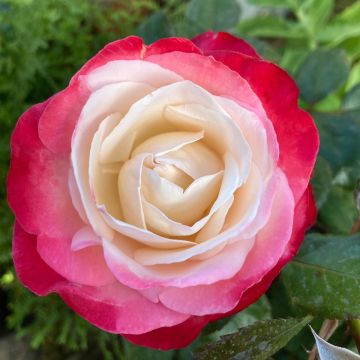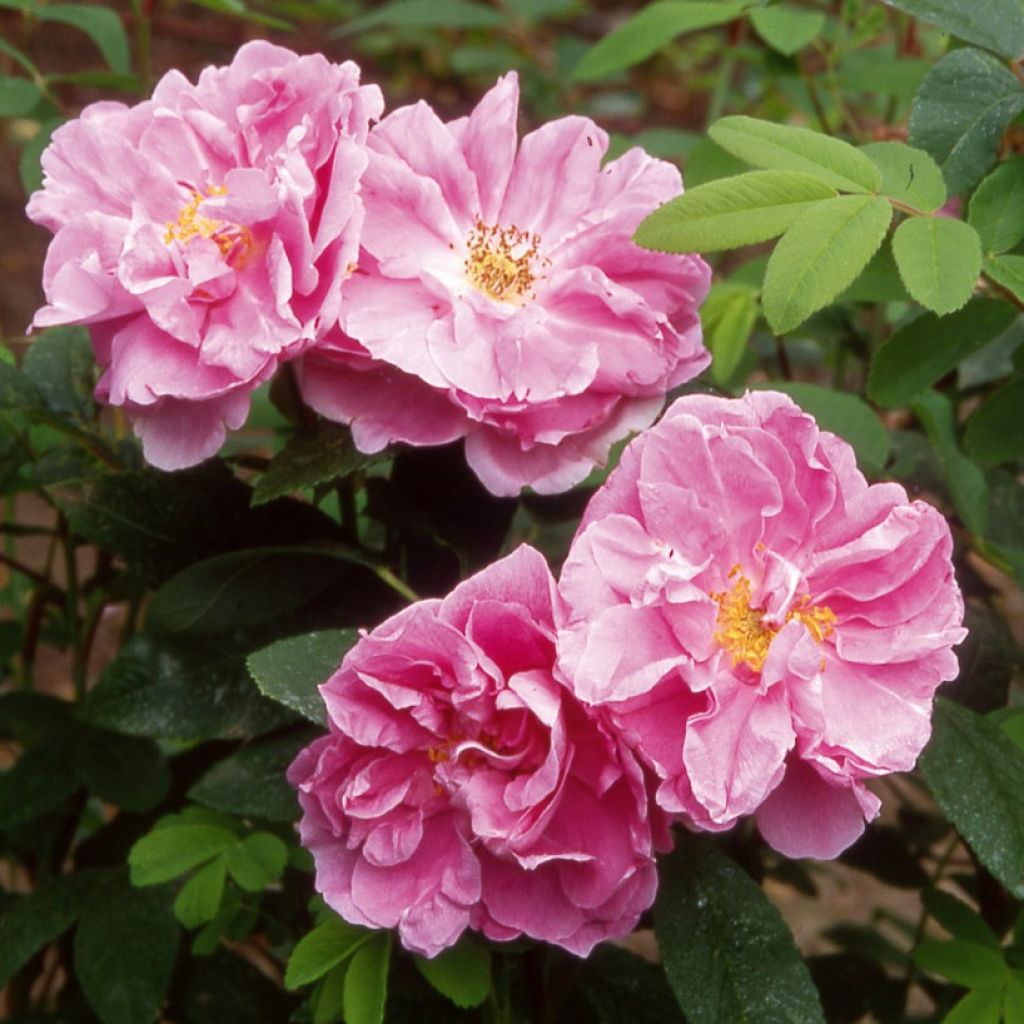

Rosa x rugosa Thérèse Bugnet - Shrub Rose
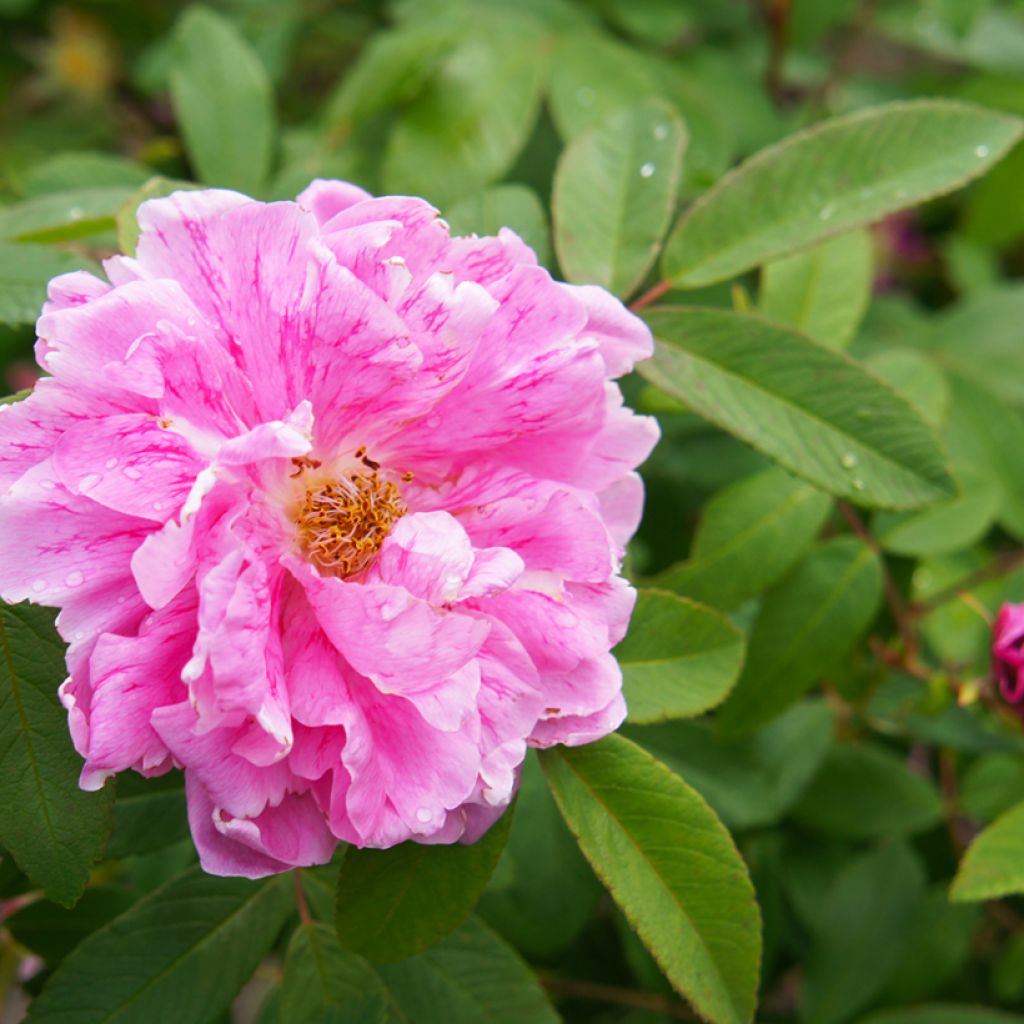

Rosa x rugosa Thérèse Bugnet - Shrub Rose
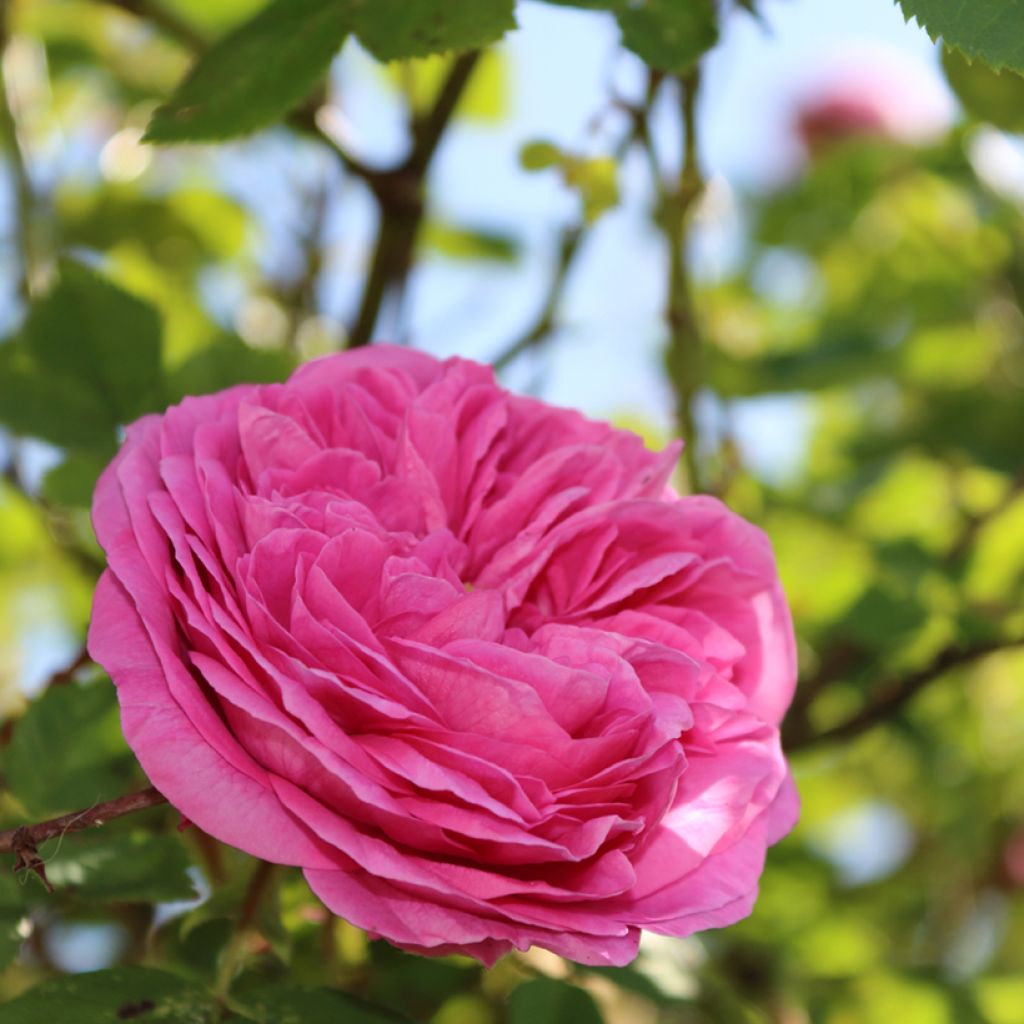

Rosa x rugosa Thérèse Bugnet - Shrub Rose
Rosa x rugosa Thérèse Bugnet - Shrub Rose
Rosa x rugosa Thérèse Bugnet
Rose
This item cannot be shipped to the selected country
Delivery charge from €5.90
Delivery charge from €5.90
Delivery to Corse prohibited
More information
Schedule delivery date,
and select date in basket
This plant carries a 24 months recovery warranty
More information
We guarantee the quality of our plants for a full growing cycle, and will replace at our expense any plant that fails to recover under normal climatic and planting conditions.
From €5.90 for pickup delivery and €6.90 for home delivery
Express home delivery from €8.90.
From €5.90 for pickup delivery and €6.90 for home delivery
Express home delivery from €8.90.
Delivery to Corse prohibited: UE law prohibits the import of this plant from mainland France to Corse as part of the fight against Xylella fastidiosa. Please accept our sincere apologies.
More information
Does this plant fit my garden?
Set up your Plantfit profile →
Description
Rose Thérèse Bugnet, born in Canada in 1950, is a sturdy bush accustomed to harsh winters. This hybrid of the rugosa rose combines the vigour and health of botanical roses with the repeat flowering of modern creations. Large and decorative all year round, it stands out for its visible red dogwood wood in winter, its fragrant crumpled roses on a beautiful light green foliage from late spring to the first frost, its beautiful orange-red rose hips washed with red, and finally its autumn foliage in shades of gold, bronze, and copper. It excels as a hedge, but also thrives when planted in a flower bed and kept shorter through pruning. This rose, which fears heatwaves, is particularly adapted to cool climates in summer.
Rosa x rugosa 'Thérèse Bugnet' has the genes of Rosa rugosa, a vigorous rose from the Far East, as well as those of various North American wild roses and a modern repeat flowering rose. When allowed to grow freely, this rose forms a beautiful bush that can reach a height of 1.60 to 1.80 meters (5 to 6 feet), sometimes more depending on growing conditions. Regular pruning will keep it at around 1.50 meters (5 feet) in height and 1.30 meters (4 feet) in width. If not grafted, it tends to spread laterally through suckers, making it valuable for forming impenetrable hedges. The branches of this rose are dark red and almost devoid of prickles. The deciduous foliage is abundant and disease-resistant, composed of leaves divided into 5 to 9 leaflets with a lightly toothed edge, carried by red petioles that turn warm colours in autumn. Its beautiful semi-double flowers, 8-10 cm (3-4in) wide, with crumpled petals, open in a very bright pink colour and then fade slightly. At full bloom, they reveal a beautiful bouquet of yellow stamens that attract pollinators. The flowering starts quite early in the season, towards the end of May, and continues in successive waves until October if the soil remains moist. The fragrance of the flowers is described as fruity with notes of lemongrass. In the case of this Thérèse Bugnet rose, it seems that hot summers inhibit the formation of flower buds for the following season. The plant produces a few large round fruits that turn orange-red at maturity. Persisting on the bush for a long time, they enhance its charm at the end of the season.
Rose Thérèse Bugnet, very hardy and low-maintenance, is essential in a garden that embraces nature. While the passion for botanical roses and their direct hybrids is not widespread, it is fully justified, especially in poor soils or challenging climates: these roses are not only the parents of our modern roses, but also generally more robust and reliable. "Thérèse Bugnet" is a rose full of charm, bringing the garden to life in all seasons. It can be planted in a hedge or shrub bed. To accompany it, consider, for example, the roses Nevada, Robusta, or Westerland. It can also be associated with Cotinus and deciduous Euonymus for autumn colors, lilacs for their fragrance in spring, mock oranges for the same reason, as well as viburnums that, like it, display a strong character.
Report an error about the product description
Rosa x rugosa Thérèse Bugnet - Shrub Rose in pictures


Plant habit
Flowering
Foliage
Botanical data
Rosa
x rugosa
Thérèse Bugnet
Rosaceae
Rose
Cultivar or hybrid
Other Roses A to Z
Planting and care
Rose Therese Bugnet is highly resistant to harsh winters, but it does not tolerate heatwaves and excessively hot climates, which seem to hinder its ability to flower. This variety is immune to rose diseases. It adapts to any type of soil, as long as the planting is properly cared for! Plant it in well-prepared, well-amended, and well-drained ordinary soil, and in a sunny or semi-shaded position, which it tolerates very well, especially in highly sunny regions. To maintain a bushy habit, maintenance is simple: after winter, every 2 years, remove the oldest branches (2-3 years old). Quite hardy, this rose can withstand temperatures as low as -25°C (-13°F). It may be useful to remove dead wood in winter and prune faded flowers. If necessary, in spring, after the risk of frost, a light pruning can be done.
To plant your rose, whether in a pot or in open ground, work your soil to a depth of 25 cm (10in), crumbling it well and adding a base amendment such as bonemeal at the bottom of the planting hole. Position your plant, free from its pot, covering the top of the root ball with 3 cm (1in) of soil, backfill, and water thoroughly to remove air pockets. In dry weather, regular watering for a few weeks is necessary to encourage root growth. Remember to provide your rose with special rose fertiliser to stimulate plant flowering.
Planting period
Intended location
Care
-
, onOrder confirmed
Reply from on Promesse de fleurs
Haven't found what you were looking for?
Hardiness is the lowest winter temperature a plant can endure without suffering serious damage or even dying. However, hardiness is affected by location (a sheltered area, such as a patio), protection (winter cover) and soil type (hardiness is improved by well-drained soil).

Photo Sharing Terms & Conditions
In order to encourage gardeners to interact and share their experiences, Promesse de fleurs offers various media enabling content to be uploaded onto its Site - in particular via the ‘Photo sharing’ module.
The User agrees to refrain from:
- Posting any content that is illegal, prejudicial, insulting, racist, inciteful to hatred, revisionist, contrary to public decency, that infringes on privacy or on the privacy rights of third parties, in particular the publicity rights of persons and goods, intellectual property rights, or the right to privacy.
- Submitting content on behalf of a third party;
- Impersonate the identity of a third party and/or publish any personal information about a third party;
In general, the User undertakes to refrain from any unethical behaviour.
All Content (in particular text, comments, files, images, photos, videos, creative works, etc.), which may be subject to property or intellectual property rights, image or other private rights, shall remain the property of the User, subject to the limited rights granted by the terms of the licence granted by Promesse de fleurs as stated below. Users are at liberty to publish or not to publish such Content on the Site, notably via the ‘Photo Sharing’ facility, and accept that this Content shall be made public and freely accessible, notably on the Internet.
Users further acknowledge, undertake to have ,and guarantee that they hold all necessary rights and permissions to publish such material on the Site, in particular with regard to the legislation in force pertaining to any privacy, property, intellectual property, image, or contractual rights, or rights of any other nature. By publishing such Content on the Site, Users acknowledge accepting full liability as publishers of the Content within the meaning of the law, and grant Promesse de fleurs, free of charge, an inclusive, worldwide licence for the said Content for the entire duration of its publication, including all reproduction, representation, up/downloading, displaying, performing, transmission, and storage rights.
Users also grant permission for their name to be linked to the Content and accept that this link may not always be made available.
By engaging in posting material, Users consent to their Content becoming automatically accessible on the Internet, in particular on other sites and/or blogs and/or web pages of the Promesse de fleurs site, including in particular social pages and the Promesse de fleurs catalogue.
Users may secure the removal of entrusted content free of charge by issuing a simple request via our contact form.
The flowering period indicated on our website applies to countries and regions located in USDA zone 8 (France, the United Kingdom, Ireland, the Netherlands, etc.)
It will vary according to where you live:
- In zones 9 to 10 (Italy, Spain, Greece, etc.), flowering will occur about 2 to 4 weeks earlier.
- In zones 6 to 7 (Germany, Poland, Slovenia, and lower mountainous regions), flowering will be delayed by 2 to 3 weeks.
- In zone 5 (Central Europe, Scandinavia), blooming will be delayed by 3 to 5 weeks.
In temperate climates, pruning of spring-flowering shrubs (forsythia, spireas, etc.) should be done just after flowering.
Pruning of summer-flowering shrubs (Indian Lilac, Perovskia, etc.) can be done in winter or spring.
In cold regions as well as with frost-sensitive plants, avoid pruning too early when severe frosts may still occur.
The planting period indicated on our website applies to countries and regions located in USDA zone 8 (France, United Kingdom, Ireland, Netherlands).
It will vary according to where you live:
- In Mediterranean zones (Marseille, Madrid, Milan, etc.), autumn and winter are the best planting periods.
- In continental zones (Strasbourg, Munich, Vienna, etc.), delay planting by 2 to 3 weeks in spring and bring it forward by 2 to 4 weeks in autumn.
- In mountainous regions (the Alps, Pyrenees, Carpathians, etc.), it is best to plant in late spring (May-June) or late summer (August-September).
The harvesting period indicated on our website applies to countries and regions in USDA zone 8 (France, England, Ireland, the Netherlands).
In colder areas (Scandinavia, Poland, Austria...) fruit and vegetable harvests are likely to be delayed by 3-4 weeks.
In warmer areas (Italy, Spain, Greece, etc.), harvesting will probably take place earlier, depending on weather conditions.
The sowing periods indicated on our website apply to countries and regions within USDA Zone 8 (France, UK, Ireland, Netherlands).
In colder areas (Scandinavia, Poland, Austria...), delay any outdoor sowing by 3-4 weeks, or sow under glass.
In warmer climes (Italy, Spain, Greece, etc.), bring outdoor sowing forward by a few weeks.




































